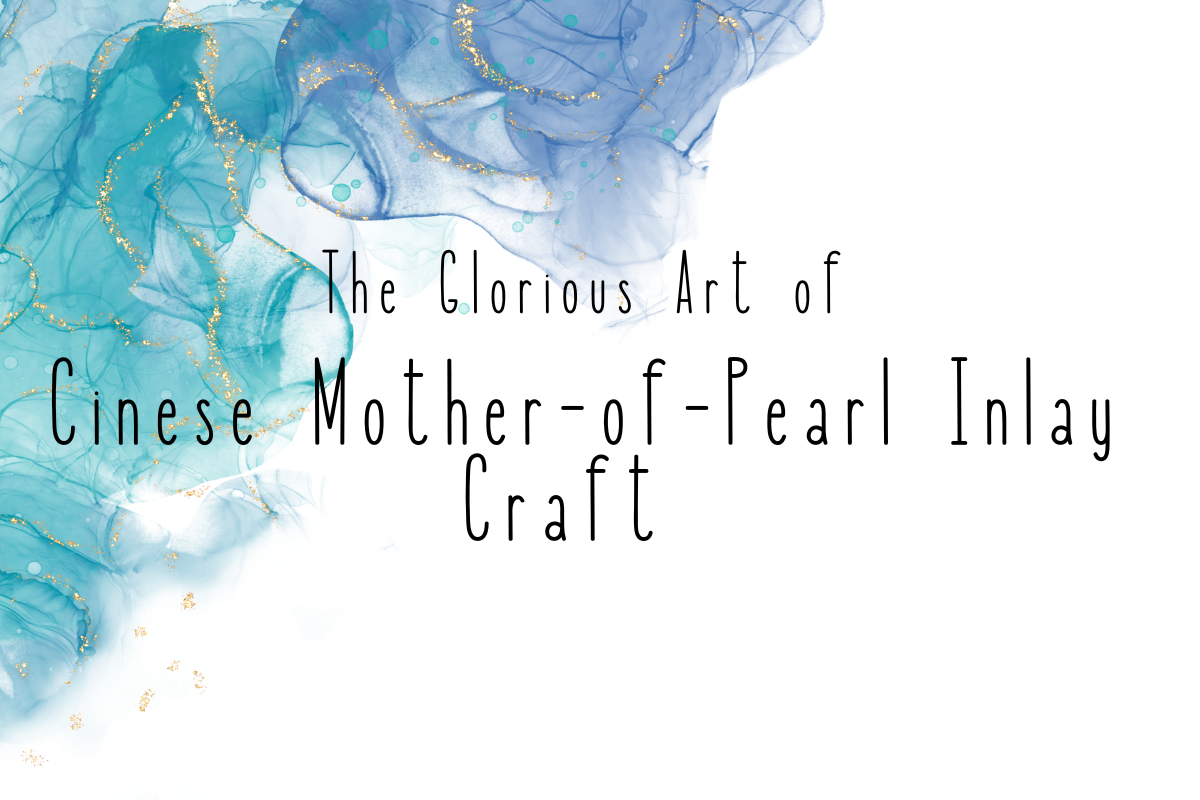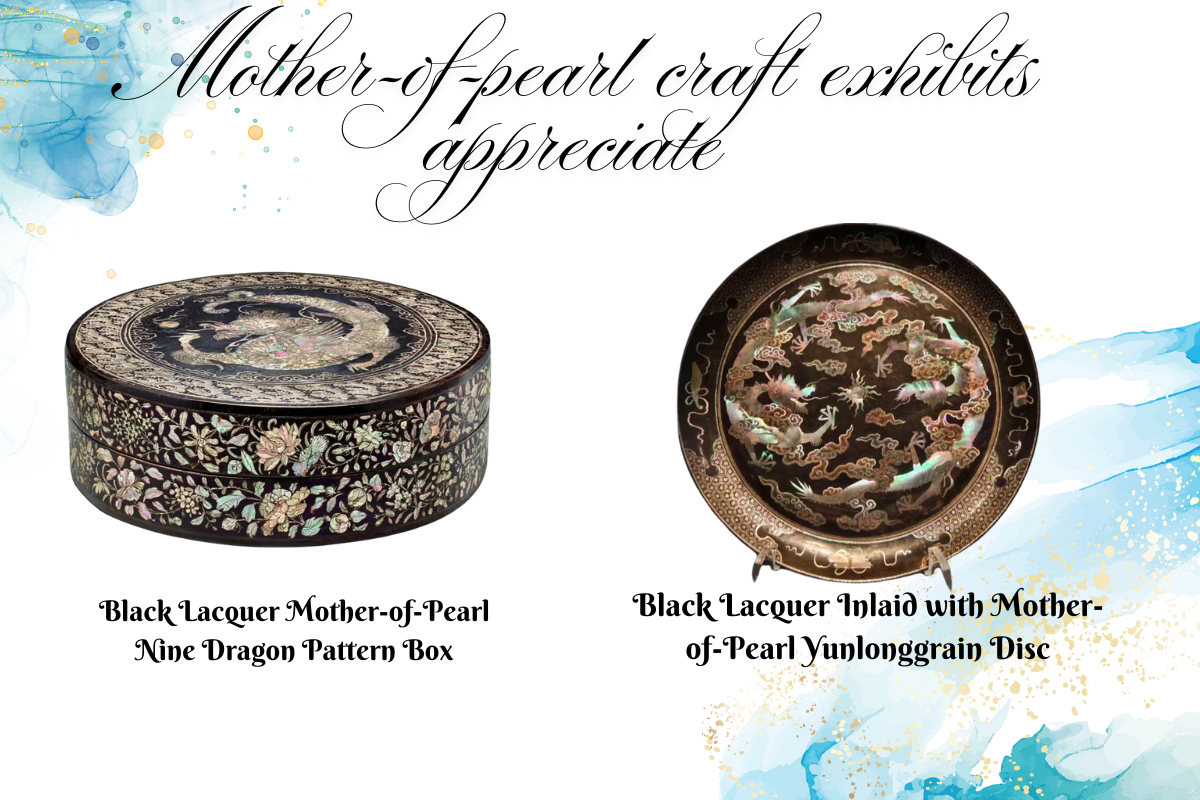The Glorious Art of Chinese Mother-of-Pearl Inlay Craft
Mother-of-pearl inlay is a gem in traditional Chinese craftsmanship, an essential part of intangible cultural heritage. It utilizes the lustrous inner layer of natural shell (like mother-of-pearl) as material, intricately cut and embedded on lacquer or wooden surfaces to create dazzling decorative patterns, showcasing the impeccable craftsmanship and aesthetic pursuit of ancient artisans.

Historical Origins
Origin: The art of mother-of-pearl inlay can be traced back to the Shang and Zhou dynasties, reaching maturity in the Tang dynasty, widely used in furniture and screens during the Song and Yuan periods, and becoming a craft favored by the imperial court in the Ming and Qing dynasties, particularly in Yangzhou and Shanxi.
Literary References: The Song dynasty's "Record of Lacquer Decoration" detailed mother-of-pearl techniques, while the Ming dynasty's "Accounts of Tian Shui and Bing Shan" recorded the luxurious mother-of-pearl furniture in Yan Song's mansion.
Craft Characteristics
Material Selection: Mainly using nautilus shells, abalone shells, pearl shells, showcasing iridescent hues of white, pink, blue, green, etc.
Production Process:
Cutting and Polishing: Shaving shells to 0.1-0.2 millimeters thickness, cutting into pieces following patterns.
Embedding: Embedding shell pieces into the object's surface using raw lacquer or adhesive, requiring precise alignment.
Lacquering and Polishing: Multiple layers of lacquer applied and polished to achieve a mirror-like smooth surface.
镶嵌(xiāng qiàn),verb,embedding
Example:
- He embedded the gemstone in the ring.
他把宝石镶嵌在戒指上。
Tā bǎ bǎo shí xiāng qiàn zài jiè zhi shàng. - She embedded the photo in the picture frame.
她把照片镶嵌在相框里。
Tā bǎ zhào piàn xiāng qiàn zài xiàng kuàng lǐ.
Classification:
Thick Mother-of-Pearl (Hard Inlay): Used in large furniture, offering a strong three-dimensional effect.
Thin Mother-of-Pearl (Soft Inlay): Nearly transparent, suitable for intricate designs, like the Ming dynasty's "Dian Luo" technique.
Artistic and Cultural Value
"Multi-Treasure Inlay": Combined with jade, coral, symbolizing wealth and prosperity (e.g., the Forbidden City's "Black Lacquer Mother-of-Pearl Nine Dragon Pattern Box").
Symbolic Patterns: Common motifs include flowers, birds, landscapes, figures; for instance, the "Mother-of-Pearl Peony Pattern Box" symbolizes prosperity, the "Mother-of-Pearl Fisherman Painting" embodies the idea of reclusion.
East-West Exchange: Tang dynasty mother-of-pearl mirrors reached Persia along the Silk Road, influencing Japan's "Mother-of-Pearl Shejing."

Protection and Inheritance
Endangered Status: Due to high manual costs and declining shell resources, there is a scarcity of inheritors (e.g., only a few workshops in Yangzhou).
Innovative Practices: Modern designers incorporate mother-of-pearl in jewelry, wristwatches (e.g., Swiss brands introducing mother-of-pearl dials), or combine it with 3D printing.
Intangible Cultural Heritage Certification: In 2006, "Yangzhou Lacquer Decoration Craft" (including mother-of-pearl) was listed in the national intangible cultural heritage catalog.
传承人(chuán chéng rén),noun,inheritors
Example:
- These inheritors bear the responsibility of protecting traditional culture.
这些传承人肩负着保护传统文化的责任。
Zhè xiē chuán chéng rén jiān fù zhe bǎo hù chuán tǒng wén huà de zé rèn。 - Many inheritors are committed to reviving traditional handicrafts.
许多传承人致力于复兴传统手工艺。
Xǔ duō chuán chéng rén zhì lì yú fù xīng chuán tǒng shǒu gōng yì。
Appreciation Highlights
Light and Shadow Effects: Premium mother-of-pearl exhibits gradient luster from different angles.
Inlay Technique: Top-tier works have nearly invisible gaps, seamless patterns akin to paintings.
Historical Features: Tang Dynasty used mostly copper-based inlay, Ming Dynasty commonly featured "Color Separation Mother-of-Pearl" (utilizing natural shell color differences in composition).
The art of mother-of-pearl inlay seamlessly blends natural beauty with human craftsmanship, its preservation is not only about the continuation of skill but also the inheritance of Eastern aesthetic spirit. Contemporary efforts like digital archiving, interdisciplinary collaborations continue to revitalize this ancient craft, keeping its brilliance alive.